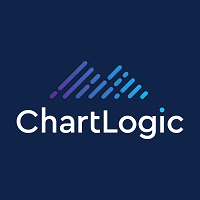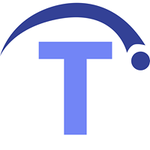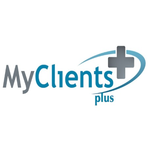What Is Speech Therapy Software?
Speech therapy software is a specialist tool used to help people with speech and language impairments. It is a digital solution that includes a variety of exercises, games, and activities to help you enhance your communication abilities, including pronunciation, articulation, and speech fluency. This software was developed by speech-language pathologists and other specialists in the area, making it a trustworthy and evidence-based tool for speech treatment.
One of the most important advantages of speech therapy software is its ability to deliver individualized therapy sessions based on the user's specific needs and goals. This individualized approach ensures that each user receives a treatment plan that is both customized and effective. Furthermore, many speech therapy software systems provide real-time feedback and progress tracking, allowing patients to monitor their development and adapt their therapy plan accordingly.
Furthermore, speech therapy software is a versatile tool that may be utilized by people of all ages, including children, adults, and those suffering from a variety of speech and language impairments. It provides a fun and interactive way to learn and practice speech skills, making it excellent for people with learning difficulties or those who have difficulty with standard therapeutic methods.
When selecting a voice therapy program, it is critical to evaluate its usability and compatibility with various devices. Many programs support multiple platforms, allowing users to use the software from their computer, tablet, or smartphone. Furthermore, some software has bilingual choices, making it suitable for non-native English speakers.
What Are The Recent Trends In Speech Therapy Software?
Speech Therapy Software is a rapidly expanding discipline that is continually being updated and improved. As a buyer, you must stay current on industry developments in order to make an informed selection about which software is appropriate for your needs.
We will look at the latest developments in speech therapy software, giving you a thorough overview of what to look for when acquiring these vital tools.
1. Teletherapy: One of the most significant trends in speech therapy software is the increase in teletherapy. Due to technological improvements, therapists can now conduct online therapy sessions with their clients. This has significantly increased access to speech therapy services, particularly for people living in remote areas or with limited mobility. Teletherapy also allows for greater schedule flexibility and decreases the need for in-person appointments, making it a convenient choice for both therapists and patients.
2. Customization And Personalization: No two people have the same speech therapy requirements, and software makers have acknowledged this by providing more configurable and individualized solutions. Speech therapy software now provides features like personalized lesson plans, focused exercises, and progress tracking. This allows therapists to personalize treatment regimens to their clients' individual requirements and goals, resulting in more successful outcomes.
3. Multi-Sensory Integration: Many speech therapy software packages now use a range of sensory modalities, including visual, aural, and tactile, to engage clients in learning. This multisensory method has been shown to be beneficial in enhancing speech and language skills, especially in people with learning difficulties or sensory processing issues. Look for software that combines these several modalities to provide a more engaging and thorough learning experience.
4. Gamification: Gamification, or the use of game-like aspects in non-game contexts, is a growing trend in speech therapy software. Gamification, by making therapy more interesting and engaging, can encourage people to practice their speech and language abilities more consistently. It also enables a more engaging and hands-on learning experience, which is especially good for younger customers or those with attention deficits.
5. Integration With Speech Recognition Technology: Speech recognition technology has advanced significantly in recent years, and it is now used in many speech therapy software applications. This enables for real-time feedback on pronunciation and articulation, which improves therapy sessions' efficiency and effectiveness. Some software also allows you to track your progress over time and customize routines to meet your specific needs.
Benefits Of Using Speech Therapy Software
Speech therapy software provides numerous benefits to both therapists and their patients. These modern technological programs are intended to improve traditional techniques of speech therapy, making it easier and more efficient for therapists to provide comprehensive and tailored treatment plans.
Let's explore, we'll go over the numerous advantages of using speech therapy software so you can make an informed selection.
1. Flexible And Convenient Sessions: One of the most significant advantages of speech therapy software is its capacity to offer flexible and convenient therapy sessions. Remote therapy allows patients to receive treatment in the comfort of their own homes, reducing the need for travel and saving time. This is especially useful for patients who have trouble getting to a clinic, such as those with physical limitations or those who live in rural locations.
2. Personalized Treatment Plans: Speech therapy software uses advanced algorithms and assessments to develop tailored treatment plans for each patient. These plans take into account the patient's personal demands and goals, ensuring that the therapy is tailored to their unique needs. This not only enhances therapy efficacy, but also boosts patient engagement and motivation.
3. Engaging Exercises And Activities: Speech therapy software includes a selection of engaging exercises and activities that help patients interact and enjoy their therapy sessions. This gamification of speech therapy keeps patients interested and motivated to complete their exercises, which leads to better results. Furthermore, the program enables therapists to monitor a patient's development and make alterations to the treatment plan as necessary.
4. Access To A Wide Range Of Resources: Most speech therapy software includes a large library of resources, such as films, instructional materials, and games, to aid in therapy sessions. These resources give therapists more options to target specific speech and language abilities, making treatment more thorough and successful.
5. Time-Saving And Cost-Effective: Speech therapy software allows therapists to save time and resources by automating procedures like scheduling, paperwork, and progress tracking. This allows therapists to focus more on patient care, which leads to greater results. Furthermore, remote therapy eliminates the need for costly equipment and manpower, making it a more affordable choice.
Important Factors To Consider While Purchasing Speech Therapy Software?
When selecting speech therapy software, there are several critical elements to consider in order to make the best option for your specific requirements. With so many options available on the market, it might be difficult to find the correct one.
To assist you with your decision-making process, here are some crucial points to consider before making your purchase:
1. Target Audience: Before choosing speech therapy software, it is critical to identify the audience for whom it is meant. Speech impairments and language difficulties can vary widely, and certain software may be tailored to specific age groups or types of disorders. Consider who will use the product and ensure that it satisfies their individual requirements.
2. Features And Functions: The software should include a variety of features and functions that are appropriate for speech therapy goals such as articulation, language, fluency, and voice training. Furthermore, the software should be interactive and interesting, with the ability to measure progress and provide feedback to users.
3. Customization And Flexibility: Each person's speech therapy requirements are unique, and the software should be adaptable to meet their needs. Look for software that allows you to change the difficulty level, target specific areas for growth, and add personalization for a more successful therapeutic experience.
4. Compatibility: Before using the software, ensure that it is compatible with your computer or device. Some software may be limited to specific operating systems or require additional hardware or software to perform properly. To avoid technical issues, make sure the program you choose is compatible with your equipment.
5. User-Friendly Interface: To be effective, speech therapy software must have a clean, intuitive, and simple interface. It should be visually appealing, well-organized, and include clear directions for the user. This improves the user's experience, making it more entertaining and engaging.
6. Support And Updates: When purchasing speech therapy software, it is critical to assess the quality of support and updates offered by the company. Make sure there is a dependable customer support system in place, and that the software is updated on a regular basis to improve its functionality and fix any faults or issues.
7. Cost And Value: Speech therapy software prices vary, with some being more expensive than others. Consider the software's features, usability, and support when deciding its value. It may be worthwhile to invest in more expensive software if it satisfies your needs and produces better outcomes.
When choosing speech therapy software, keep these factors in mind to help you make an informed decision. Remember to read reviews, compare options, and take advantage of free trials before making a purchase. With the correct software, you may improve speech and language abilities while also improving the quality of life for people with speech impairments.
What Are The Key Features To Look For In Speech Therapy Software?
When searching for Speech Therapy Software, there are numerous crucial elements to consider in order to make the best purchasing selection for your specific requirements.
1. Comprehensive Assessment Tools: Look for software that contains a number of assessment tools for effectively diagnosing and tracking the progression of a wide range of speech impairments.
2. Customizable Treatment Plans: The program should allow patients to create customized treatment plans based on their specific needs, as well as readily change and adjust them as needed.
3. Adaptive Learning: Look for software that uses adaptive learning technology to vary the pace and difficulty of exercises based on the user's progress, making them more effective and entertaining.
4. Multisensory Approach: The software should provide a wide range of visual, aural, and tactile signals and activities to cover all elements of speech development.
5. Data Tracking And Reporting: A competent speech therapy software should be able to track and analyze data, as well as generate detailed reports and progress charts to help patients track their development.
6. Interactive And Engaging Activities: Look for software that provides a diverse range of speech therapy activities that are interactive, engaging, and enjoyable to patients of all ages.
7. Accessibility And Compatibility: Look for software that is compatible with a variety of platforms, such as computers, tablets, and mobile devices, making it easier to include into regular therapy routines.
8. User-Friendly Interface: The program should have a simple interface that both patients and therapists can navigate and use.
9. Cost-Effective: Take into account the software's cost and value, as well as any additional expenses for upgrades or technical support. Look for choices that include a free trial or a flexible payment plan.
10. Evidence-Based: Finally, look for software that has been researched and proven to be beneficial in speech treatment.
Why Do Businesses Need Speech Therapy Software?
Businesses require speech therapy software for a variety of reasons. First and foremost, it enables employees to develop their communication skills, which are essential in every professional environment. This not only promotes their confidence and productivity, but it also improves their capacity to communicate thoughts and ideas clearly. Furthermore, speech therapy software can be tailored to target specific speech and language issues that may impede job effectiveness.
Whether it's articulation, fluency, or voice issues, these software tools provide a comprehensive range of exercises and activities to address specific needs. Speech therapy software also offers organizations a low-cost solution for employee training. Rather than engaging a speech therapist or sending staff to external training sessions, organizations can use this software to build and improve their employees' communication abilities at a lower cost.
Furthermore, speech therapy software provides real-time progress tracking and reporting, allowing employers to monitor the program's success as well as their employees' improvement. This information can also be utilized in performance reviews and to suggest areas for improvement. Finally, in today's globalized and diverse workplaces, speech therapy software can help with language acquisition and accent reduction. This can be especially useful for businesses with a diverse workforce or that operate in multilingual settings.
How Much Time Is Required To Implement Speech Therapy Software?
The time required to implement speech therapy software is determined by a variety of factors, including the software's complexity, the level of customization necessary, and the client's specific demands. However, on average, it takes 4-6 weeks to properly deploy speech therapy software and show significant improvements in a client's speech and language abilities.
During the initial stages, speech therapists and clients will collaborate to set goals, generate baseline data, and use the software to develop a personalized treatment plan. This can take anywhere from one to two weeks, depending on the client's readiness and the level of commitment necessary by the therapist. Once the initial setup is complete, customers will usually utilize the program for 30-60 minutes per day, depending on their age and abilities, for the length of their therapy.
This may differ depending on the precise therapeutic regimen suggested by the therapist. It is critical to emphasize that strong commitment and consistency from both the therapist and the client are required for successful implementation and outcomes. To get the most out of the software, it is recommended that therapy sessions be scheduled on a regular basis.
Furthermore, speech therapy software frequently includes a number of resources and capabilities, such as progress tracking and individualized activities, which may necessitate additional time for training and familiarization. However, the user-friendly design of most software makes it simple to navigate and incorporate into therapeutic sessions.
What Is The Level Of Customization Available In Speech Therapy Software?
Speech therapy software is a useful tool that can help therapists develop personalized treatment programs for people with speech and language impairments. One of the most important considerations when selecting speech therapy software is the level of customization provided. The level of customisation in speech therapy software refers to the ability to tailor the program to each patient's individual needs.
This includes adjusting the program's settings, activities, and workouts to address the individual's personal issues and goals. When analyzing the extent of customisation in speech therapy software, various variables must be considered. These include the ability to select or construct unique therapy programs, change difficulty levels, track progress, and revise treatment plans as needed.
Many speech therapy software packages include a wide range of tasks and exercises for different speech and language impairments, but the level of customization varies substantially. Some programs enable therapists to develop unique activities based on a patient's individual needs, whereas others only provide pre-designed exercises that cannot be customized.
Furthermore, the capacity to modify difficulty levels within activities is crucial in ensuring that the therapy is rigorous but manageable for the patient. This feature can assist patients remain involved and motivated to continue their therapy. Furthermore, recording and monitoring a patient's progress is critical for establishing the effectiveness of the therapy and making required changes. Some speech treatment software includes thorough reporting and data analysis, while others merely give basic progress tracking.
Which Industries Can Benefit The Most From Speech Therapy Software?
Speech therapy software can be a valuable resource for people of all ages who struggle with speech and communication issues. However, several businesses can tremendously benefit from incorporating this technology into their regular operations. These industries include education, healthcare, and corporate environments. Speech therapy software can help teachers and school workers provide specific treatment and assistance to students who have speech and language difficulties.
This software allows you to design personalized treatment plans, track progress, and provide interactive and interesting activities for kids to improve their speech skills. Speech-language pathologists can employ speech therapy software to help patients with a variety of speech and communication impairments, including stuttering, dysarthria, and aphasia.
This technology enables therapists to design tailored treatment plans, track progress, and deliver virtual therapy sessions to patients who are unable to attend in-person sessions. Speech therapy software can be used in corporate settings to help employees improve their communication and public speaking skills. This is especially helpful for people who have difficulty speaking during presentations, meetings, or phone conversations.
Employees can use this software to practice and develop their speaking skills in a supportive and private setting. Finally, speech treatment software can help any industry that involves communication and requires effective speaking abilities. Individuals can use this technology to improve their speech and communication skills, resulting in increased confidence, productivity, and overall success in their respective sectors.
Conclusion
Finally, investing in speech therapy software can considerably benefit those with speech and language difficulties. These software packages provide a variety of features, including interactive exercises, customisable therapy plans, and progress tracking, all aimed at improving speech and communication abilities. When deciding which speech therapy software to purchase, it is critical to conduct extensive research and compare many possibilities to ensure that it suits the user's individual needs.Price, compatibility, and usability are all important considerations.
Furthermore, it is critical to include a speech-language pathologist in the decision process, as they can provide vital information and recommendations on which software is best suited to a certain individual. Overall, given technological improvements and the convenience and flexibility that speech therapy software provides, it has become an indispensable tool for enhancing speech and communication skills.
So, if you or a loved one is having difficulty with speech and language, investing in the correct speech therapy software can significantly improve their overall quality of life. Keep these points in mind when making your decision, and select the best speech therapy software for your needs.












